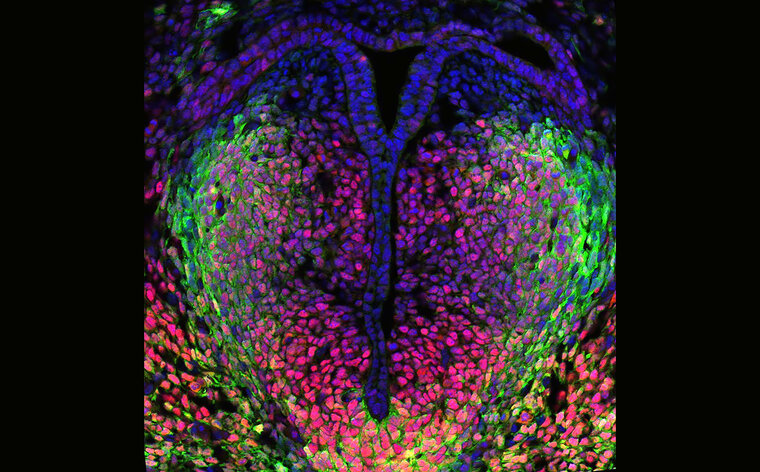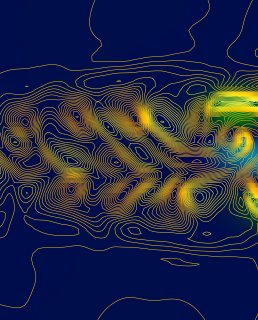
Honorable Mention, 2021
The vocal folds of the larynx (voice box) are critical for modulating speech, and therefore communication. They also serve as a physical barrier between the trachea and esophagus, enabling air to pass through the trachea, and food and water to pass through the esophagus. Because of this, birth defects of the larynx such as laryngeal webbing and tracheo-laryngomalacia not only cause problems in speaking, but often co-occur with severe feeding and respiratory issues in infants. Despite the life-threatening nature of these malformations, the molecular etiology of these defects, and indeed early vocal fold development, is unknown.
Two days into larynx development in the mouse embryo, we have visualized tendon (green) and cartilage (red) progenitor cells forming the rudimentary vocal folds. The presence of these green cells suggests that early tendon precursors contribute in a major way to shaping and perhaps specifying mature vocal fold structures. Current efforts are focused on defining the overall contribution of these cells to later larynx development and how they may be affected in mice with laryngeal defects.
Credit:
Janani Ramachandran
Cell and Molecular Biology Graduate Student




